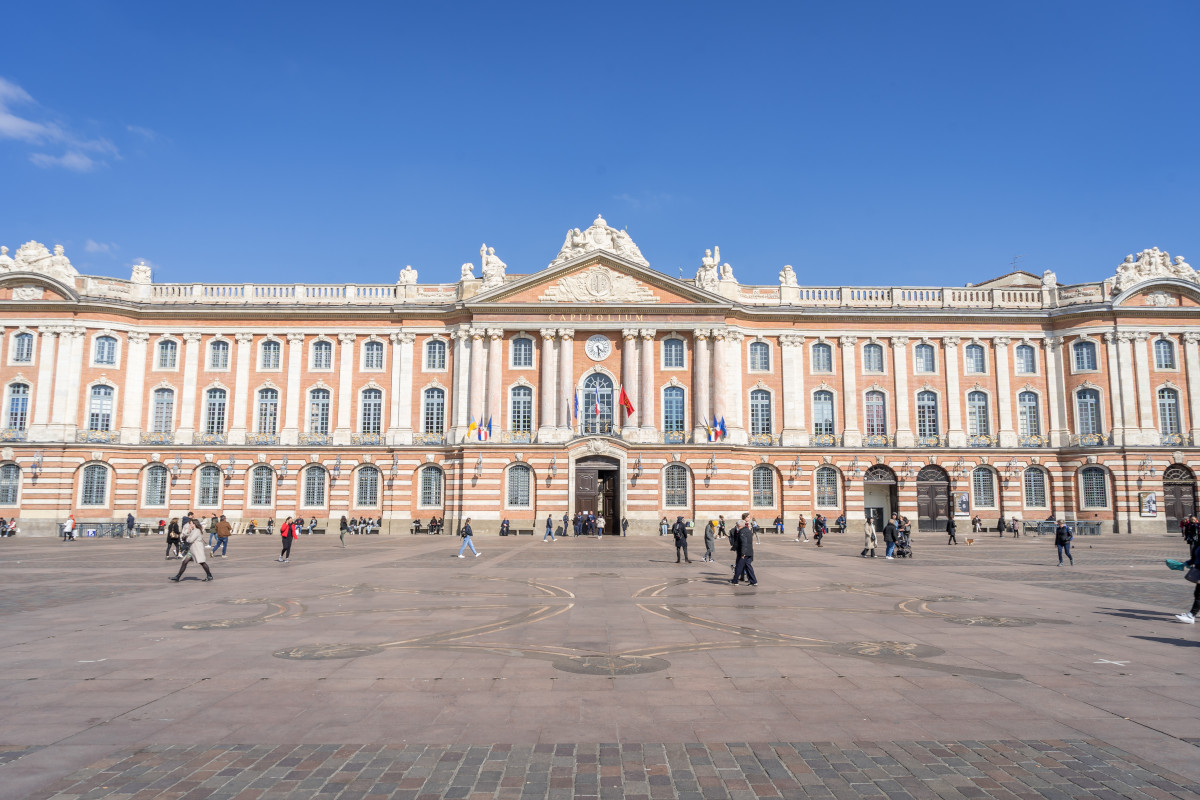Last Updated on December 10, 2023 by Marian Jones
It is THE symbol of Toulouse, the elegant pink marble columned façade of the Capitole, sitting majestically along one side of the city’s central square, the Place du Capitole. This post tells you all about the Capitole: a little history, its role today and what to expect if you go inside to visit it.
what is the capitole?
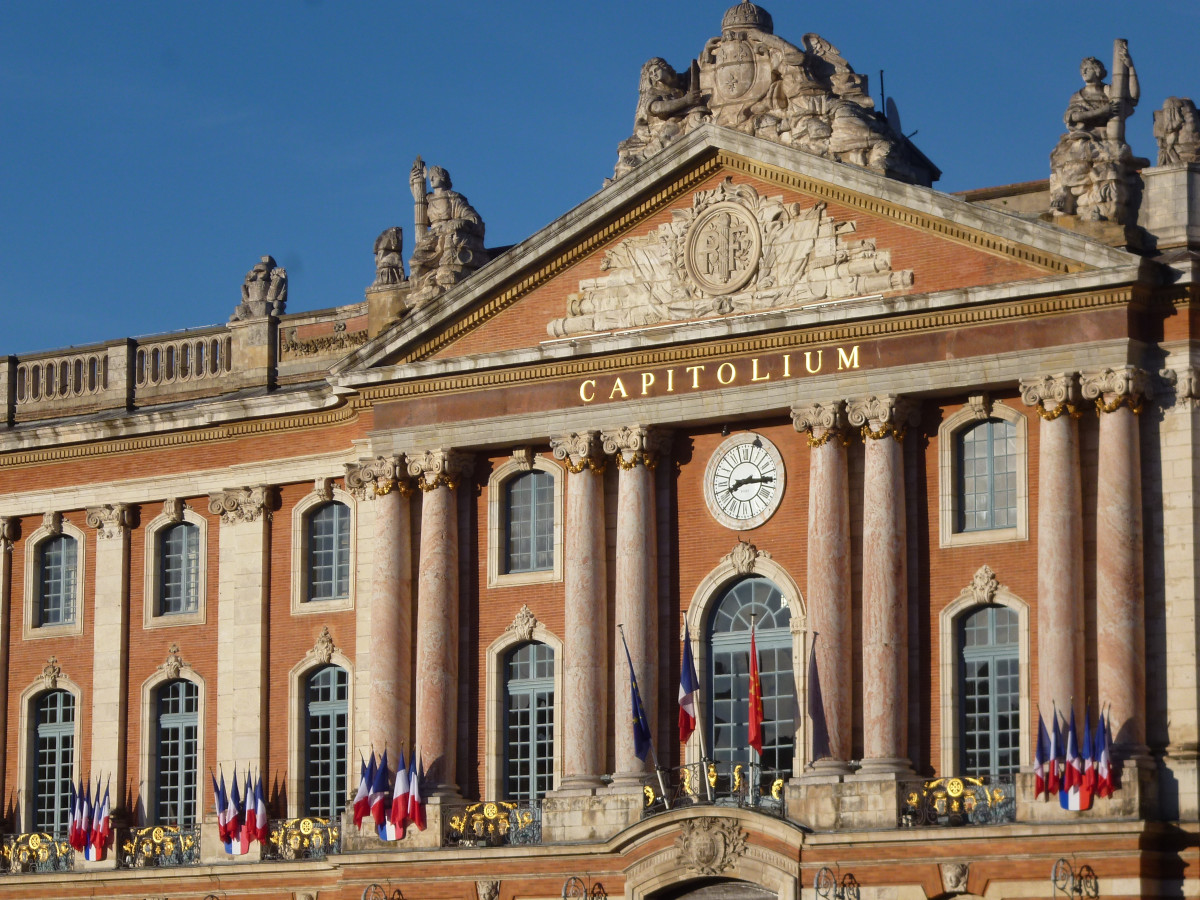
Really, the Capitole is Toulouse’s town hall, the building which elsewhere would be called the ‘Mairie’ or the ‘Hôtel de Ville’. It’s Toulouse’s seat of government, where chamber meetings are held and decisions made on the running of the city. It’s where the city’s weddings take place and yes, it’s also a tourist venue because inside you can learn about the city’s past and some of its most famous residents.
In medieval times, Toulouse was run by the ‘Domini de Capitulo’, or the ‘Lords of the Chapter’ and by the 15th century they were known as ‘les seigneurs du capitole’. As they moved from Latin to French, the ‘Capitol’ part stuck, hence its name today. In the early days the Capitouls faced much opposition from others who wanted to rule Toulouse: the members of the ‘Parlement de Toulouse’, which was set up in 1420 and the church, which felt it had jurisdiction of much of what happened in the city.
Things turned violent in the Riots of Toulouse in 1562 because they were based on religious conflict. While the members of the Parlement were largely catholic, some of the Capitouls were Huguenots. Several thousand people were killed in the violent clashes before the catholics triumphed. 200 years later, when processions through the city were held to celebrate this, the philosopher Voltaire sneered at ‘their joy at the day when 4,000 heretical citizens were massacred 2 centuries ago.’ After the French Revolution in 1789, Toulouse was much more centrally governed, by the Assemblée Nationale in Paris, whose jurisdiction was enforced, where necessary, by executing those who opposed it.
la place du capitole
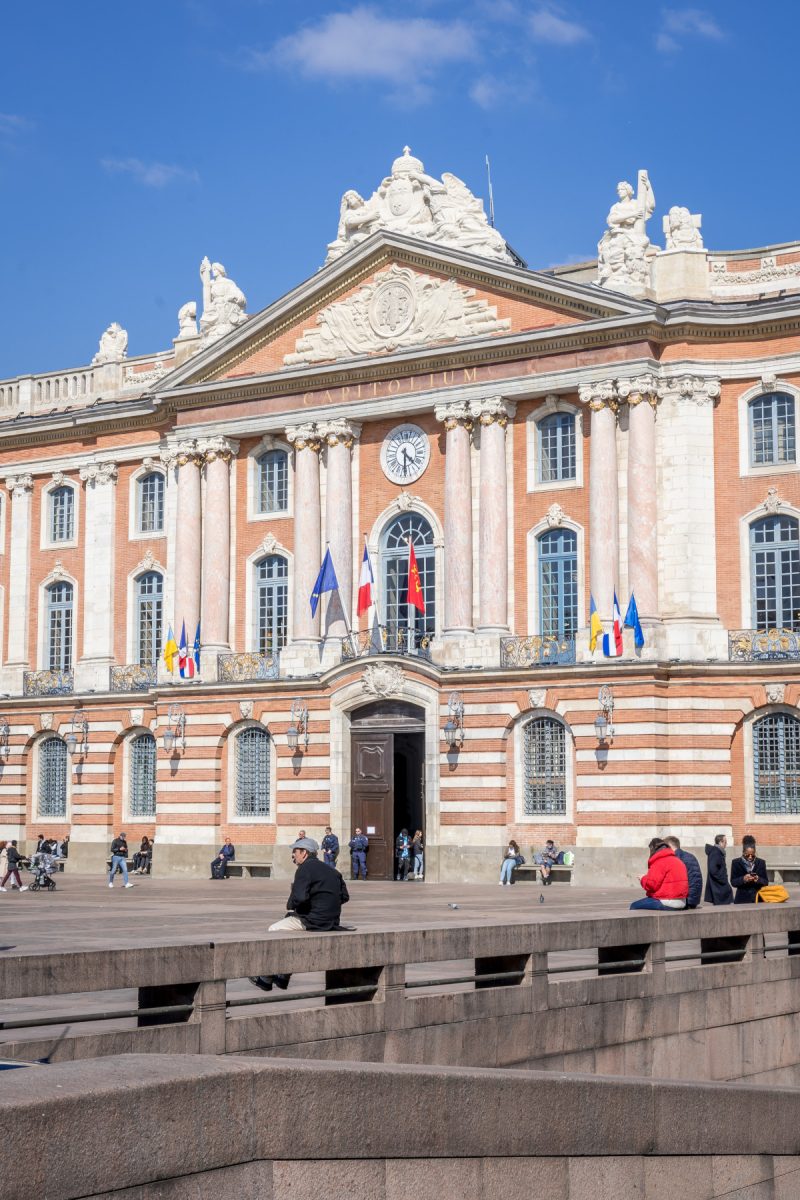
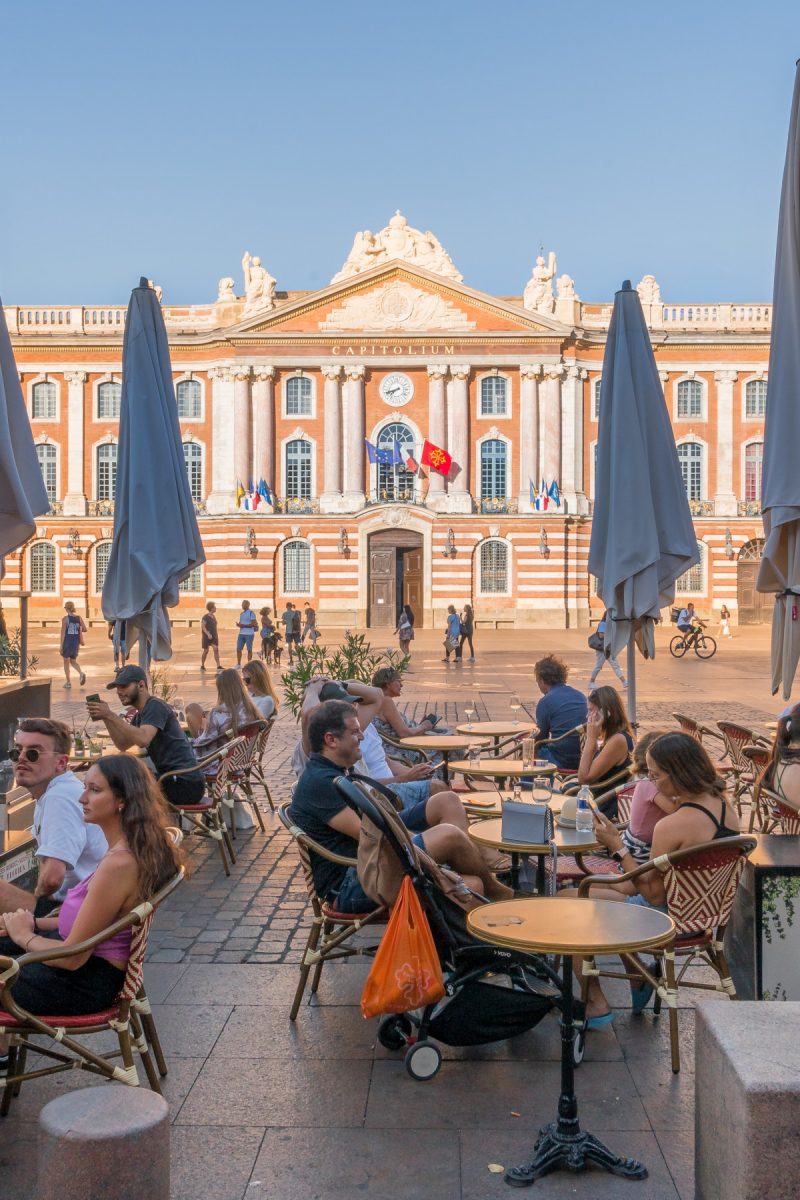
This huge square is the heart of the city, lined by cafés and used for many public events and gatherings. Set into the paving is an Occitan Cross, the region’s symbol, a cross with 4 equal spurs which originated in the 12th century. The Capitole itself was built in the 1750s, its elegant façade designed to cover the multitude of small buildings already there. It has 8 columns, representing the original 8 Capitouls (municipal magistrates) and is decorated with statues. The middle two represent strength and justice, the outer ones the arts, sciences, tragedy and comedy – the city’s theatre is right here too. Finished not long before the Revolution, it’s seen as one of France’s last ‘ancien régime’ buildings.
inside the capitole
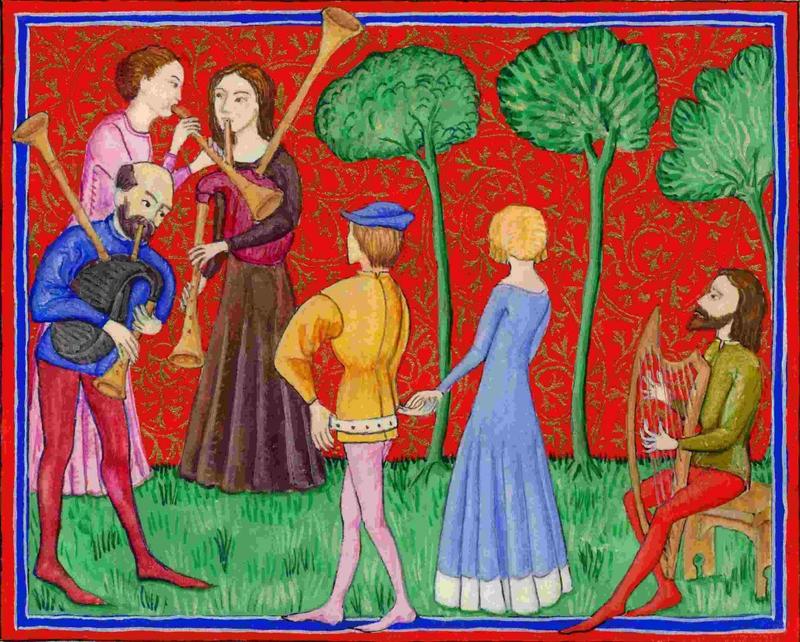

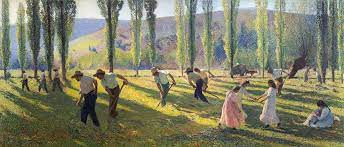
You can tour the building with a guide. You will stop in the courtyard, the oldest part of the Capitole, where there’s a plaque commemorating the execution of Henri de Montmorency in 1632 for leading a resistance to catholic troops. So high profile was this macabre event that the King, Louis XIII, and his all-powerful Cardinal, Richelieu, attended in person. You’ll be taken too to the former Dungeon, now the city’s main Tourist Office. The coats of arms of former Capitouls are here too, as is a statue of Henri IV, possibly France’s most popular king.
In the main stairway inside is a painting – actually dating from 1912 – which represents the city’s medieval history: the ‘Fête des Jeux Floraux’, representing an annual poetry competition with roots in the area’s troubadour tradition. In the ‘Salle Gervais’, where weddings take place, are suitably romantic paintings of Eros and of nymphs, plus three paintings depicting love at different ages: 20, 40 and 60. You can visit the Salle Henri Martin, given over to works by this local artist who gained a national reputation in the 1920s. And in the Council Chambers is a plaque listing all the mayors of Toulouse since 1790, ie just after the revolution.
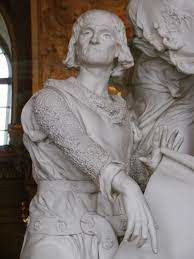
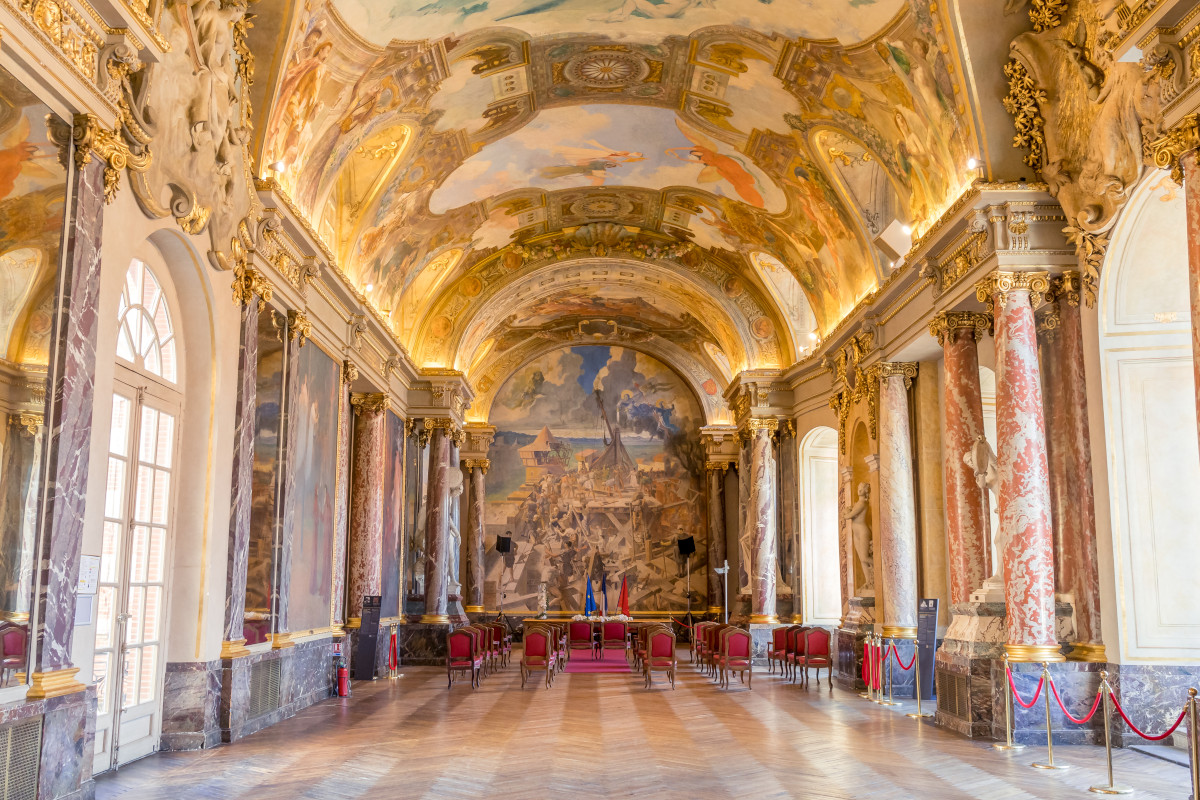
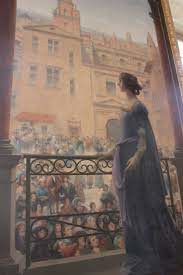
The stand-out room is the Salle des Illustres, where official receptions are held. It’s decorated in honour of the city’s most illustrious past residents. There are busts of high achievers like Raymond VI, the 13th century count who defended Toulouse against a siege, of Pierre-Paul Ricquet who built the Canal du Midi and of Jean Jaurès, the local politician who went on to lead the French Socialist Party. There’s also one of the mathematician Pierre de Fermat, known today as the founder of the modern theory of numbers. All of these, and a number of paintings, were commissioned at the end of the 19th century, when 20 artists were asked to produce works to celebrate ‘glorious episodes in Toulouse culture.’
The paintings include a giant scene showing Pope Urban II entering Toulouse in 1096, to summon the faithful to a crusade and another showing The Defence of Toulouse against Simon de Montfort, depicting the rampart from which the stone which killed him was launched. So, two of the city’s most glorious moments. More macabre is the painting of La Belle Paule, recalling the tale of this local beauty who captivated King François I and all of Toulouse. The full story is on the podcast, but to summarise, after her death at an early age, the citizens demanded that her body be dug up from its grave, to prove that she was still beautiful. Perhaps you can predict how that went.
Listen to the POdcast
links for this post
The Capitole
Tours of the Capitole
Previous post Toulouse: churches and troubadours
Next post The Resistance in Toulouse

